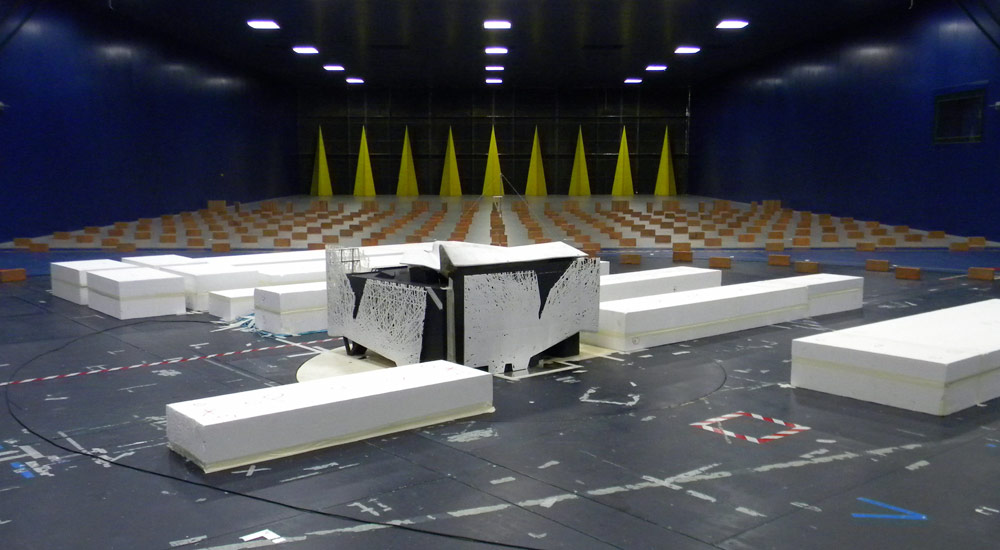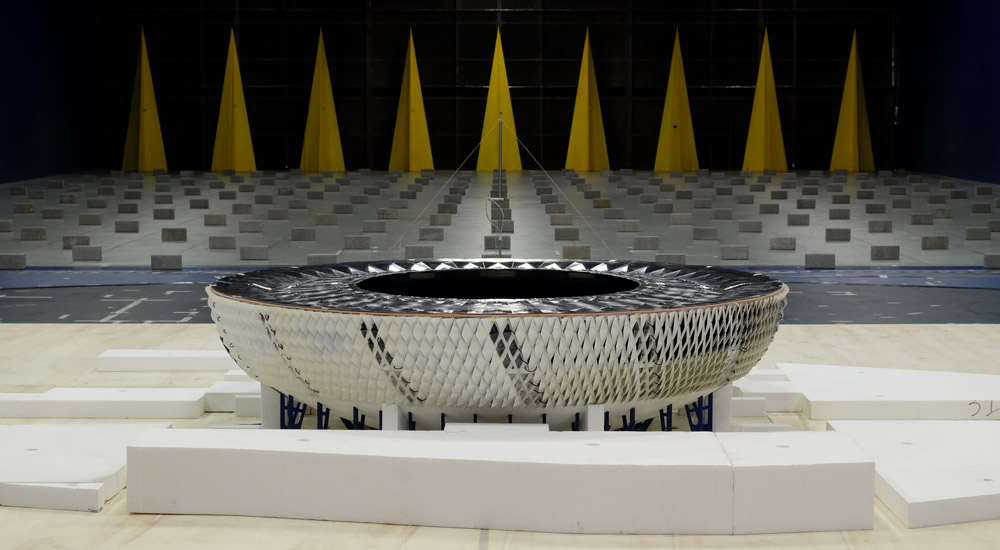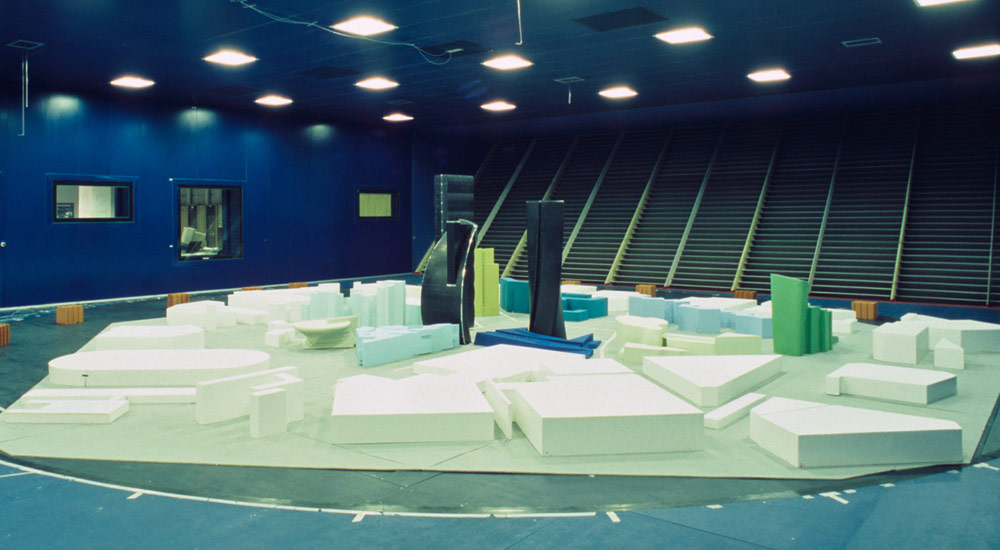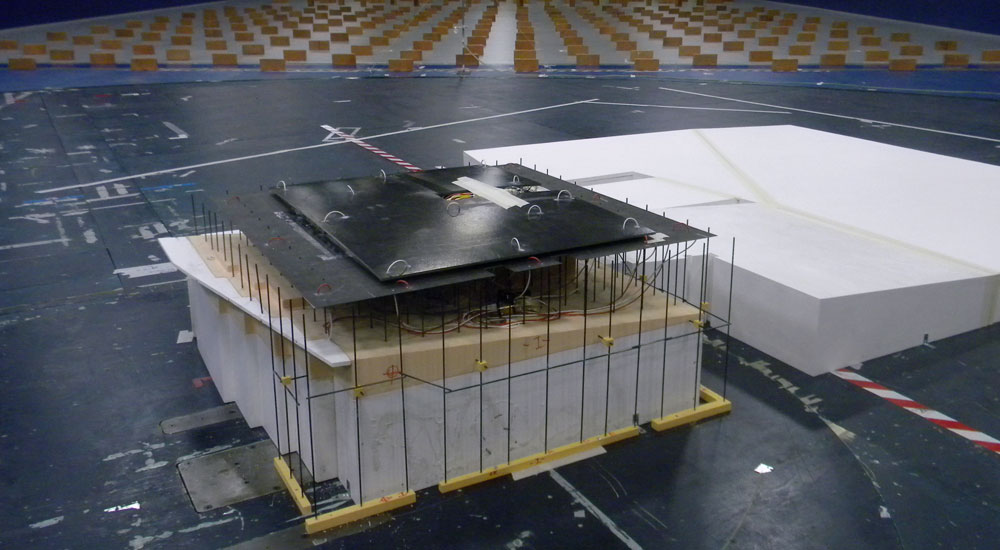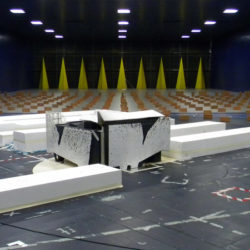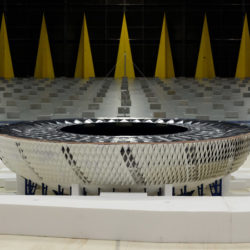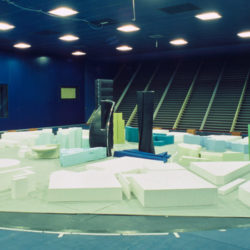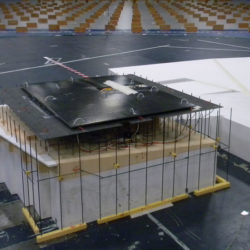Buildings & roofs
Wind effects have a significant importance in the design stage of civil structures. Wind tunnel study of the aerodynamics of structures such as tall buildings and large roofs affords data for optimum design and identifies possible unexpected wind-induced problems, since interaction between fluid and structures can result in an important dynamic response that needs to be considered. Furthermore the definition of wind levels in pedestrian areas is helpful for wind comfort analysis. Wind tunnel studies are especially recommended for structures with an unusual or unique shape. In addition, tests may be integrated with computational fluid-dynamic (CFD) calculations.
Global wind loads are defined by using a multi-components dynamometric balances that provide base force and moments on models. Cladding loads are evaluated by measuring the surface pressure distribution on scaled models. Several hundreds of points can be simultaneously sampled by using high-speed pressure scanners that define both static and dynamic loads.
The dynamic response of the structure caused by the turbulent wind in terms of wind loads can be also calculated as the combination of the external pressure loads and the inertial loads caused by the structural dynamic.
The study is carried out through a modal approach considering as input the pressure data experimentally acquired during the wind tunnel test and the modal information (modal masses, mode shapes and frequencies) obtained from a finite element model. Wind load distributions are produced by combining the pressure load distribution and the dynamic load distribution for important wind directions.
Using the same approach it is possible to evaluate the maximum accelerations of the tower in order to test the occupant comfort. Aeroelastic models are specially designed for studying the dynamic effects due to fluid-structure interaction.
Simulation of the natural wind is a key-point for studying the effects of the wind itself. The considerable dimensions of the boundary layer test section make it possible to achieve this goal as well as to conduct tests on small scaled models (1/50÷1/200) with significant relevant geometrical features.

